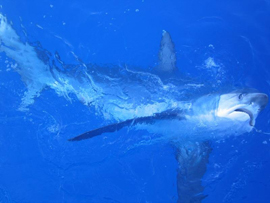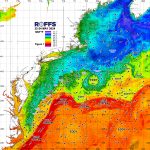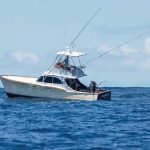OVERVIEW

As top predators in the ocean, sharks have an extremely sensitive sense of smell, eyes that can adapt to dim light, lateral line receptors that sense movement in the water, and electroreceptors that can detect prey even in the absence of scent or visual clues. Common thresher sharks are also armed with powerful jaws and rows of blade-like teeth that are replaced often, so they always have a sharp set to inflict a clean bite. There are three species of thresher sharks: common (Alopias vulpinus), pelagic (A. pelagicus), and bigeye (A. superciliosus). Pelagic and common threshers are caught and sold in the United States, but fishermen are prohibited from harvesting bigeye threshers in the Atlantic due to their low population levels.
Common thresher sharks are caught by several nations in temperate waters around the world. In the United States, they’re harvested incidentally in longline fisheries for swordfish and tuna in the Atlantic and Gulf of Mexico, and on rod and reel gear by recreational fishermen. In the Pacific, they’re caught as bycatch and in a highly regulated directed fishery off California, which supplies most of the U.S. harvest of this species (see Pacific common thresher shark).
Common thresher sharks, like many shark species, are especially vulnerable to overfishing because they live a long time, take many years to mature, and only have a few young at a time. Recovery from overharvest can take years or decades. Sharks require special attention – NOAA Fisheries is conducting research, implementing restrictions and working with fishermen domestically, and pursuing conservation of shark species worldwide to maintain healthy shark populations and recover populations that are overfished.
Please click here to read more about the Atlantic Common Thresher Shark on NOAA FishWatch.






